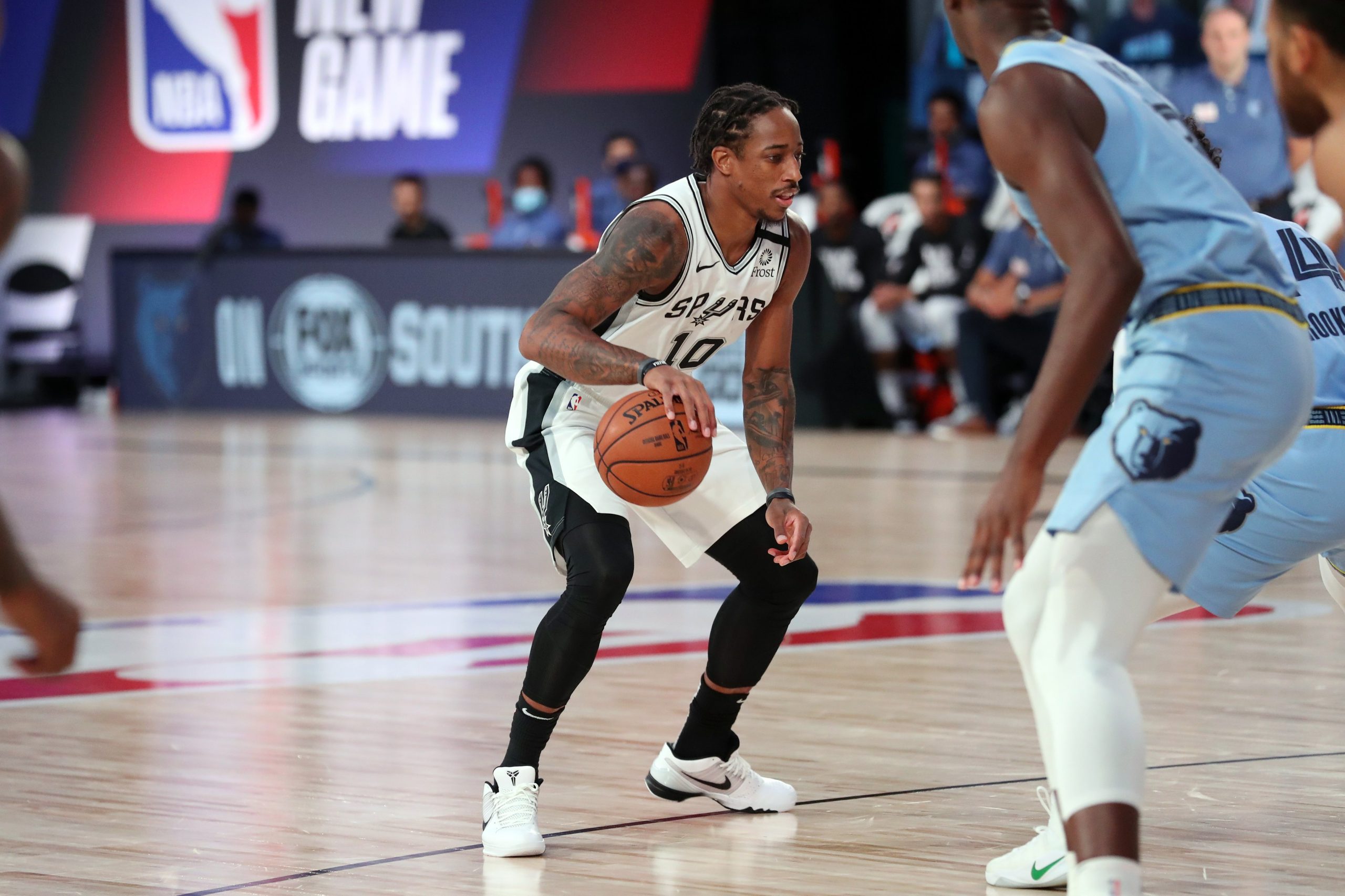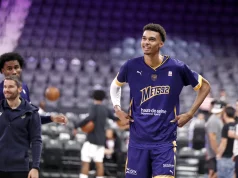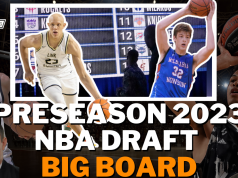Some strong performances from the San Antonio Spurs in the NBA bubble in Orlando have kept their playoff hopes alive. Even if they do fall short of the playoffs, the growth of several young players and the flowing, exciting style the team has adopted since the restart are very positive signs for the Spurs’ future. Here, we look at some of the trends in the Spurs’ play and how they might impact the team’s success in the coming years.
Passing
Both Spurs fans and analysts from around the league have taken note of the stylistic development the Spurs have shown since the league’s restart. Instead of a steady diet of LaMarcus Aldridge and DeRozan isolations, the Spurs have generally played Jakob Poeltl or Drew Eubanks with four smaller perimeter players, and team has emphasized rapid and continuous ball movement. In addition to being aesthetically very enjoyable, this style allows little advantages to build up throughout a possession, resulting in easier shots:
Both White and Walker’s drives forced multiple defenders to commit. Rather than plowing headlong into traffic, they looked for the openings that the defense gave. Meanwhile, White’s continual off-ball movement helped him slip unnoticed to the corner after his initial drive.
Many have commented on how DeMar DeRozan’s ball-dominant style has been difficult to build around. However, ever since arriving to the Spurs, he has continually worked on and emphasized his playmaking abilities, averaging more assists in his time in San Antonio than he ever did in Toronto. Aldridge, now out injured, is actually the bigger culprit in the Spurs’ recent isolation-heavy style. Aldridge’s ability to shoot over almost any defender – one of his greatest strengths – means that even when double-teamed, he is still able to get shots off rather than swinging the ball to the free man.
Jakob Poeltl has replaced Aldridge in the starting lineup, and he is a much more willing passer. Poeltl’s effective screening and rolling often force the defense into rotations which he can take advantage of:
Essential to this style of play is that the Spurs’ young players – like Keldon Johnson here – are quick to recognize and execute cuts into open space.
The Spurs’ assist ratio in the bubble has been 18.3, a mark that would be 8th-best in this season. This number is highest when Poeltl is on the floor, but other important players are essential to this system:
| Player | Assist Ratio when On Court |
| Jakob Poeltl | 20.0 |
| DeMar DeRozan | 19.6 |
| Patty Mills | 19.3 |
| Derrick White | 19.2 |
| Lonnie Walker | 19.1 |
| Keldon Johnson | 18.5 |
The takeaway here is that this unselfish, free-flowing style is not the product of having one genius playmaker on the court. Rather, multiple players – including the Spurs’ young core – are buying into the system that brought the Spurs such success in 2012-2014.
Poor Finishing
The Spurs’ assist numbers would be even better if their young guards could more consistently translate their size and athleticism into made layups. Derrick White has proven to be a brilliant offensive player at the basket, but Dejounte Murray and Lonnie Walker IV cannot always complete their powerful attacks to the rim.
In an earlier analysis of these young guards, I noted how Lonnie Walker IV often appears to avoid contact rather than using his explosiveness to finish through players or draw fouls. Here we see it again in their recent game against Memphis:
Meanwhile, since the restart Murray is shooting an ugly 33.3% from below 10 feet, 3rd-worst among guards who have taken two or more attempts per game from this range.
Murray and Walker both shoot well at the rim, 60%, but less than 33% from floater range. However, both settle too frequently for floaters. 38% of Murray’s attempts below 10 feet are floaters, and 39% for Walker. For comparison, guards like Kyle Lowry and Malcolm Brogdon both shoot less than 30% of these shots as floaters, despite neither having the size and explosiveness of the Spurs’ young guards.
Small-Ball Rebounding
As mentioned, the Spurs have started and played many lineups with DeRozan as the 4 and Poeltl as the lone big man. One of the reasons these lineups have been viable is that despite their size, they have been successful at securing defensive rebounds.
Discussing rebounding is not the most exciting part of basketball analysis, but it is a key factor in defensive efficiency. Furthermore, shaky rebounding could prevent us from seeing the lineups featuring multiple of the Spurs’ young guards that we have all been waiting for, especially given Popovich’s insistence on consistent rebounding.
For most of the regular season, Poeltl has not provided consistent defensive rebounding. The team’s defensive rebounding has dropped from 75.1% (4th in the league) to 73.6%, but in the bubble this has increased to 75.0%. Several factors are likely at play here, and they are worth considering as the Spurs decide what their team will look like moving forward.
One, Poeltl’s improvement individually bodes well for the team if they seem him as a starting center within the next few years. He has proved his ability to be effective as a starter, against opposing starting units, in these games with Aldridge out.
Second, the Spurs’ perimeter players attack rebounds as a team. DeRozan and Murray in particular use their length well to track down rebounds. As more teams play with four or five offensive players on the perimeter, this allows wing players to attack long rebounds from the outside. Here these factors converge: Poeltl gets a body on Memphis’ lone big man, and 3 of the 4 perimeter players crash the boards (Murray had 10 rebounds in this game).
Regardless of how the playoff race shapes up, fans have to be encouraged by the Spurs’ play. While far from perfect, there have been signs of growth both individually and as a team, which has produced sequences of play that are effective and exciting to watch. The team’s priority moving forward must be to sustain this growth in the coming years.






